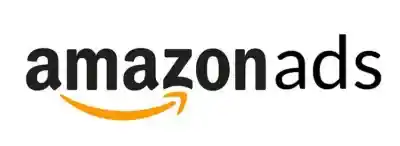Ad-Supported Video on Demand
Ad-Supported Video on Demand (AVOD) offers viewers free access to video content, funded by advertisements. Unlike the subscription-based streaming model, Ad-Supported Video on Demand platforms allow users to watch content without paying, with ads interspersed within the videos. This model appeals to audiences seeking cost-free entertainment while providing advertisers a way to reach a broad and diverse viewership. This article explores how Ad-Supported Video on Demand works, key platforms, monetization strategies, and future trends.
Key Takeaways
- Ad-Supported Video on Demand allows free access to video content funded by advertisements, making premium content more accessible without subscription fees.
- Key Ad-Supported Video on Demand platforms like YouTube, Hulu, and Tubi offer diverse content and targeted ad opportunities for advertisers.
- Ad-Supported Video on Demand faces challenges like ad fatigue and measurement difficulties, which can affect user retention and the effectiveness of advertising strategies.
Understanding Ad-Supported Video on Demand
Ad-Supported Video on Demand, or advertising-based video on demand, enables consumers to stream content for free while platforms generate revenue through ads. It modernizes the traditional TV model, adapting commercial-supported content to digital formats.
The key appeal of Ad-Supported Video on Demand lies in eliminating subscription fees, allowing viewers to access a wide range of content by watching occasional ads, similar to commercial breaks on television. This broadens access and offers advertisers opportunities for targeted advertising, allowing them to deliver relevant messaging based on viewer demographics, interests, and behavior.
For content creators, these platforms offer a revenue stream through ad monetization rather than relying solely on subscriptions. This model supports a wide range of video types and gives creators access to a global audience.
Key Ad-Supported Video on Demand Platforms
Several platforms dominate the Ad-Supported Video on Demand sector, each offering a unique range of ad-supported content.
- YouTube remains one of the most influential Ad-Supported Video on Demand platforms, allowing creators to earn revenue through advertisements. Its broad content library and large user base make it a prime platform for advertisers seeking to engage a wide audience.
- Hulu offers both ad-supported and ad-free subscription tiers, providing flexibility for viewers and enabling advertisers to reach targeted audiences in its free tier.
- Tubi delivers a vast selection of movies and TV shows at no cost, supported entirely by ads, catering to viewers looking for free, on-demand entertainment.
- Pluto TV offers both live and on-demand content, all supported by advertisements, bringing a traditional TV experience to the streaming world.
- Peacock includes a free ad-supported tier alongside its premium offerings, giving advertisers access to a broad audience through NBCUniversal’s content.
- The Roku Channel, Amazon Freevee, and Crackle also provide ad-supported content, continuing to grow in popularity as free streaming options.
These platforms provide free access to content while offering valuable advertising opportunities for brands looking to reach large, diverse audiences.
How Ad-Supported Video on Demand Works
Ad-Supported Video on Demand platforms distribute ads through two primary methods: Client-Side Ad Insertion (CSAI) and Server-Side Ad Insertion (SSAI).
CSAI involves inserting ads at the client level, meaning the video player on the user’s device dynamically handles ad placement. This method allows for flexibility, as the ads are fetched in real-time and can be tailored to the viewer’s profile, preferences, or behavior. When an ad is triggered, the video playback temporarily pauses while the ad is served. Once the ad finishes, content playback resumes, creating a seamless viewing experience. The advantage of CSAI lies in its ability to track user interactions with the ad, providing valuable data for advertisers to refine their targeting and improve the effectiveness of future campaigns. However, one of the challenges of CSAI is that it can be prone to ad-blocking software, which some users may use to bypass advertisements.
SSAI, on the other hand, inserts ads directly into the video stream at the server level before it is sent to the viewer’s device. By merging the ad with the content before transmission, SSAI eliminates the need for pauses in content playback and ensures a smooth, uninterrupted viewing experience. This method reduces the chances of interference from ad-blocking software, as the ad is embedded in the video stream itself, making it harder for such tools to detect and block. Additionally, SSAI ensures that the ad experience is uniform across various devices, including smartphones, tablets, and smart TVs, providing consistent quality and performance.
Some Ad-Supported Video on Demand platforms use a hybrid approach, combining CSAI and SSAI to maximize the benefits of both methods. This allows for advanced dynamic ad insertion, where ads are placed based on real-time data, providing a more personalized experience for the viewer while maintaining a smooth integration of ads into the content. The combination of both methods enables more precise targeted advertising, improves engagement, and ensures that each advertising video reaches the intended audience without disrupting the viewing experience.
Monetization Strategies in Ad-Supported Video on Demand
Ad-Supported Video on Demand platforms generate revenue through various ad formats, including:
- Pre-roll ads
- Mid-roll ads
- Post-roll ads
- Display ads
- Banner ads
- Interactive ads
These ad formats cater to different levels of audience engagement and types of content. They provide a flexible framework for creating effective promotional strategies. The deployment and frequency of these ads depend on factors such as video length and viewer interactions, giving content producers substantial control over ad placement.
A key factor in successful monetization is leveraging user data. Ad-Supported Video on Demand platforms use client-side ad insertion (CSAI) technology to serve tailored ads based on individual user information. This enhances ad targeting capabilities while ensuring optimal ad delivery systems. Programmatic advertising further refines this process by using insights into viewers’ preferences and activities to ensure ads remain relevant and engaging.
To maximize revenue, Ad-Supported Video on Demand platforms must focus not only on content popularity but also on understanding viewer interaction metrics. These insights are essential for successful monetization through advertising. Content creators and advertisers who use precise ad placements and data-driven strategies can increase their earnings while providing an enjoyable viewing experience for audiences.
Benefits of Ad-Supported Video on Demand
Ad-Supported Video on Demand platforms offer multiple advantages for various stakeholders. Advertisers benefit from the extensive reach of Ad-Supported Video on Demand, gaining significant brand visibility through detailed demographic and behavioral insights. The ability to integrate both first-party and third-party data enables more effective ad targeting, helping advertisers engage with a broad audience through personalized ads.
For content creators, Ad-Supported Video on Demand channels offer financial gains via revenue shares and sponsorship deals while minimizing risk and maximizing exposure since advertisers compensate for the access to audiences watching premium video offerings like those found on Prime Video.
From the viewer’s perspective, Ad-Supported Video on Demand is attractive due to its cost-effective nature, especially as subscription fatigue grows. Since Ad-Supported Video on Demand services rely on advertising revenue, they offer viewers free access to high-quality, premium content without any subscription fees.
Challenges of Ad-Supported Video on Demand
While Ad-Supported Video on Demand platforms provide clear advantages, they also face notable challenges. One major issue is ad fatigue, when viewers are exposed to too many ads or poorly targeted ads, they may become frustrated and either abandon the platform or turn to ad-free alternatives. This not only affects user satisfaction but also threatens long-term engagement and retention.
Another challenge lies in accurately measuring ad performance. Many Ad-Supported Video on Demand platforms lack advanced tracking and attribution tools, making it difficult for advertisers to link ad spend to actual consumer behavior. This uncertainty can reduce advertiser confidence and hinder future investment in Ad-Supported Video on Demand advertising strategies.
Ad-Supported Video on Demand vs Other Monetization Models
Ad-Supported Video on Demand stands out among video monetization strategies by generating revenue through advertising, offering viewers free access to content in exchange for watching ads. In contrast, SVOD (Subscription Video on Demand) relies on recurring payments for access, TVOD (Transactional Video on Demand) allows one-time rentals or purchases, and PVOD (Premium Video on Demand) offers high-demand titles at a higher cost.
As consumer preferences evolve, content creators are increasingly embracing hybrid monetization models that combine elements of Ad-Supported Video on Demand, Subscription Video on Demand, and Transactional Video on Demand. These flexible strategies help cater to diverse audience behaviors and viewing habits.
While Ad-Supported Video on Demand offers cost-free access, frequent ad interruptions can prompt some viewers to switch to ad-free subscription plans. This trend reflects a growing desire for greater control over the viewing experience and the ability to choose between free, ad-supported content and paid, uninterrupted access.
Future Trends in Ad-Supported Video on Demand
Ad-supported video on demand is rapidly gaining traction as a dominant model in the digital streaming ecosystem. Industry forecasts suggest that Ad-Supported Video on Demand could generate over $41 billion in ad revenue within the next year, reflecting a growing preference for free, ad-supported content among global audiences. This shift highlights a changing landscape where consumers seek affordable entertainment options without sacrificing access to premium video content.
Several key factors are driving this upward trend. Enhanced internet connectivity has expanded the reach of Ad-Supported Video on Demand platforms, making them more accessible to a diverse audience. Additionally, as viewers grow weary of managing multiple subscription services, many are turning to Ad-Supported Video on Demand as a cost-effective alternative. The proliferation of smart TVs, mobile devices, and connected streaming tools has also made it easier for consumers to access Ad-Supported Video on Demand content anytime, anywhere.
Technological advancements are further shaping the future of Ad-Supported Video on Demand. Innovations like programmatic advertising, AI-driven content recommendation engines, and dynamic ad insertion are improving ad relevance and user experience. These tools enable advertisers to deliver personalized, non-intrusive ads, which not only increase viewer satisfaction but also boost return on ad spend.
Summary
Ad-Supported Video on Demand marks a significant shift in how video content is consumed, offering viewers free access to content that is funded by advertisements. This model creates benefits for advertisers, content creators, and audiences alike, as it provides a balance of reach, revenue potential, and accessibility. It is important for all parties involved to understand the key platforms, monetization strategies, and challenges as they navigate this evolving landscape.
The future of Ad-Supported Video on Demand looks optimistic, with strong revenue forecasts and growing viewer engagement. Stakeholders who use the insights and strategies in this guide will be well-equipped to take advantage of the opportunities and contribute to the growth and development of ad-supported streaming.
Frequently Asked Questions
What is Ad-Supported Video on Demand?
Advertising-based Video on Demand, offers free access to video content by utilizing advertising as its funding model. This allows viewers to enjoy content without a subscription fee.
How does Ad-Supported Video on Demand differ from traditional TV?
Ad-Supported Video on Demand differs from traditional TV by providing free content funded by advertisements on digital platforms, allowing for increased targeting and personalization of ads. This leads to a more relevant viewing experience for audiences.
What are some popular Ad-Supported Video on Demand platforms?
Some popular Ad-Supported Video on Demand platforms include YouTube, Hulu, Tubi, Pluto TV, Peacock, Amazon Prime Video, The Roku Channel, and Crackle. Each of these platforms offers a variety of content that is accessible for free, supported by advertisements.
How do video ads work on Ad-Supported Video on Demand platforms?
On Ad-Supported Video on Demand platforms, video ads are inserted at specific points during content playback, such as pre-roll, mid-roll, or post-roll. These ads are designed to be non-intrusive while maximizing brand exposure and targeting viewers with relevant content. Through methods like Client-Side Ad Insertion (CSAI) and Server-Side Ad Insertion (SSAI), Ad-Supported Video on Demand platforms can offer a seamless advertising experience without interrupting the flow of the video.
What are the benefits of Ad-Supported Video on Demand for advertisers?
Ad-Supported Video on Demand offers advertisers substantial brand exposure, access to detailed user demographics, and the ability to implement personalized targeting, enhancing the effectiveness of their campaigns.
« Back to Programmatic Glossary Index
Let’s Get Started !
Let the Gourmet Ads team walk you through all the options available to ensure that your Food, Supermarket, Beverage or Kitchen advertising campaign has the best possible combination of Premium Guaranteed Inventory, Scale, First Party Data, Contextual Targeting and Programmatic Advertising elements.






